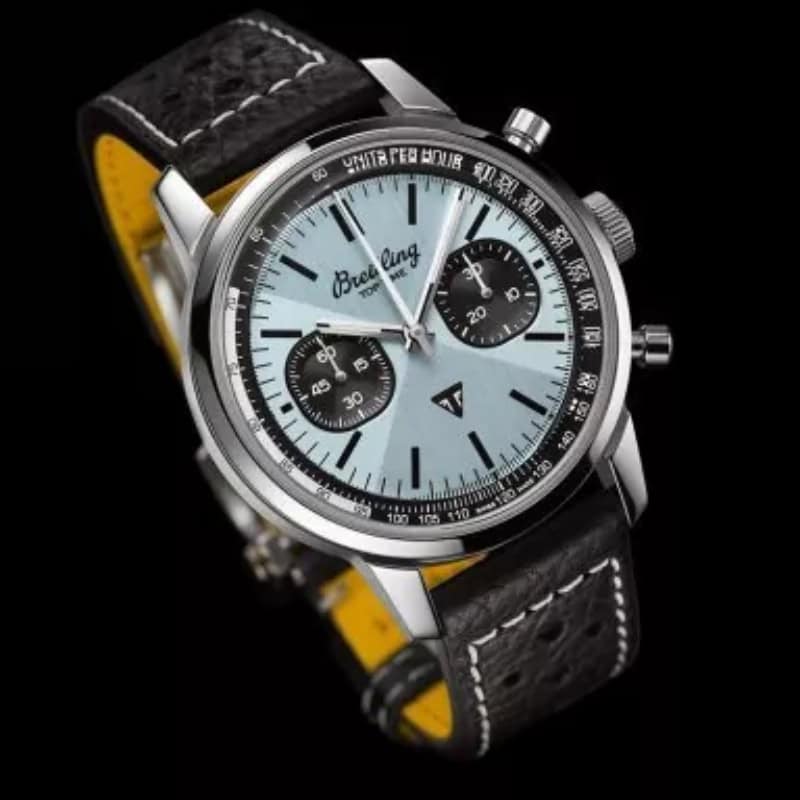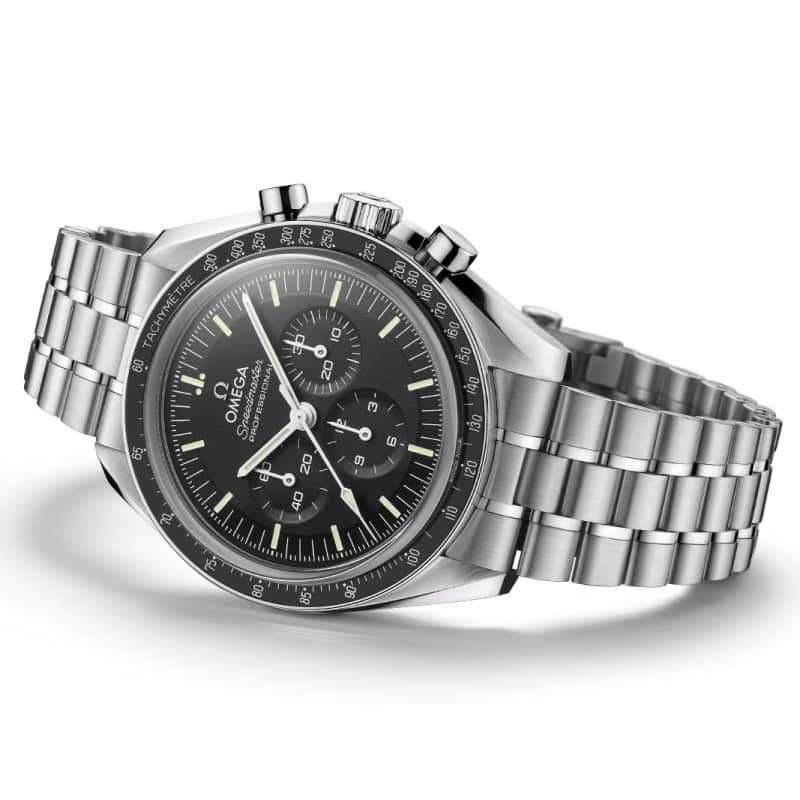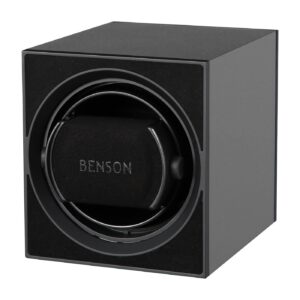Types of Watches, Mechanics, Displays & Styles
In this article we will be looking at all types of watches, their uses, displays, movements and more.
Watch Types by Movement
Automatic Watches
The movement inside an automatic watch is powered by the oscillation of a rotor. Everyday movements of the wrist causes the rotor to swing similarly in fashion to that of a very small pendulum. Resulting in the winding of the mainspring inside the watch. The energy is stored in said spring and is released gradually to power the watch. The automatic movement was commercially launched in the early 20th century despite being conceived over 150 years prior. Automatic watches can also be kept wound by using a watch winder. You can view our range of units here.


Hand Wound Watches
Similar to the automatic watch, a hand wound movement has a mainspring where the energy is stored. However, there is no rotor to power the spring, the user turns the winding crown, which through a series of gears charges the mainspring. This provides energy to release that will then power the movement.
Quartz Watches
Quartz watches are powered by a tiny piece of quartz crystal, cut into the shape of a tuning fork. Once a current is passed through it from a battery, the quartz vibrates at over 32 thousand times per second. These vibrations are turned into a pulse that powers a tiny electric motor. This motor turns the hands of the watch, or powers an LED/LCD screen.


Solar Watches
Solar watches absorb light through cells mounted on the outside of the case, or behind a semi transparent dial. The light is converted into energy that is stored in a rechargeable battery. It is then used to power the quartz movement.
Watch Types by Display/Function
There are many different types of display and functions that wristwatches can provide, below are the most common.
Analogue
Analogue watches are what we might call traditional types of watches. The time is indicated by hands that rotate and point to the numbers around the clock face or dial. Normally this is done by an hour hand, minute hand and sometimes a seconds hand.

Digital
Digital is a type of watch powered by batteries or electronics. They tell the time among having other functions being displayed via a screen that might be LCD (liquid crystal display) or LED (light emitting diode).

Smart
Smart watches are hi-tech pieces of equipment that not only tell the time but can be linked to devices such as mobile phones, tablets and computers and then share the app features on the watch screen enabling the user to be kept up to date with their modern lifestyle from their wrist. The features available on smartwatches are somewhat endless.

Hybrid
Hybrids are types of watches which combine the analogue wristwatch with the Smart-watch. Maintaining a traditional looking dial with hands but also having a screen that allows access to connected devices.

Watch Types by Intended Use/Style

Sports
These types of watches are usually (but not always) defined by their robust case, clear and easy to read display or dial and often have an array of functions that might include various types of stop watch functions, lap counters, GPS location etc. A sports watch would almost certainly need to have a decent resistance to water and shock.

Chronograph
A chronograph is a particular function that some watches feature. In most terms it is what might be commonly known as a ‘stop watch’ although the features often offer more information than simply start/stop. For example, these might include laps, sub seconds, sub minutes and units per hour, among many, many more.

Field
Field watches were initially built for and issued to soldiers. Traditionally tough and clear dials, they would have been mechanically powered but are now available with quartz movements for greater accuracy and reliability under difficult conditions. Commercial watch manufacturers have latched onto the growing interest for field watches and now incorporate many designs throughout their ranges.

Pilot
Also known as the ‘aviators’ or ‘aviation’ watch, a pilot’s watch was traditionally large cased with contrasting dials and numbers for quick and clear reading. Often, pilot’s watches have a large winding crown for easier setting wearing gloves. Luminosity is crucial too as cockpits were not always well lit. The GMT complication that enables the watch to display two time zones on one dial was designed specifically for the aviation industry. Revered pilot’s watches might include the IWC Big Pilot and Rolex GMT Master.

Luxury
When used alongside wrist watches, the word ‘luxury’ alludes to the fact that the watch is of high quality, craftsmanship and constructed using only premium materials. Well known luxury brands include Baume and Mercier, Tag Heuer, Breitling, Omega, Rolex and IWC to mention but a very few.

Pocket watches have been around for over five hundred years now, and were extremely popular until the dawn of the wristwatch. More of a fashion accessory than a necessity among the upper classes. Traditionally round by design and hand wound the pocket watch would only display hours and minutes although some high end manufacturers still produce them with a multitude of complications to showcase their capabilities.

Professional
These days the term ‘professional’ is normally associated more with the high end luxury market for watches that might be used during sport or activity but not the type mentioned above. The professional watch normally evokes thoughts of a well engineered, normally Swiss (but not exclusively) stainless steel case and bracelet featuring simple, clear dials. Many brands now employ ‘ambassadors’ to promote the extremes that their timepieces can endure, this might include mountaineers, free divers and explorers. Professional watches have also been a most popular wristwatch choice that can be worn on a daily basis due in part to their classic, uncomplicated elegance while also projecting an air of success and quality. Great examples of the professional watch might include the Omega Seamaster and Rolex Explorer.

Diver
To be considered a dive watch, the case realistically requires at least a 100m depth rating but ideally much more to guarantee it’s reliable function under the toughest conditions and pressure. Modern dive watches are usually stainless steel cased and mounted on bracelets. As with the pilot’s watch, the clarity of the dial and luminosity of the markers is critical. Many dive watches feature a single direction rotating bezel that can be set to indicate how much air one might have remaining for the current dive. A very popular style of ‘professional sport’ watch although probably not used as much in the water these days with the availability of the digital dive watch, which might be described as a wrist mounted computer that can detail everything including dive depth & duration, ascent rate, decompression times among many more crucial pieces of information.

Dress
The term ‘dress watch’ covers an enormous range of watches that could be worn for special occasions and formal functions. Generally a more classic approach to the design and perhaps made from a precious metal such as gold, rose gold or platinum and in some instances adorned with precious stones such as diamond, ruby or sapphire. Simple and elegant often dominate the dress category and sometimes complemented with a fine hide strap to compliment. One of the finest and most famous dress watches would be the Calatrava by Patek Philippe that caters for both ladies and gents. Cartier and Jaeger LeCoultre produce some fine dress pieces including the ‘Ronde Must’ and ‘Reverso’ respectively.

Fashion
Fashion watches aim purely for aesthetics, the look and design takes precedent over the materials and movement. With the movements usually being a low cost generic quartz unit, the price point is much lower than with luxury watches. Brands produce a wide range of variants enabling the buyer to better match their outfits and accessories. Fashion watch brands could include the names such as Armani, Gucci, Fossil and Maseratti among many more.
FAQs
By units produced and sold, quartz easily outstrips mechanical due to the lower cost and greater accuracy. A simple device that can tell time is all that many require, however there are many people that will not entertain quartz watches and prefer the engineering and craftsmanship that goes into mechanical watches.
There are hundreds and thousands of watch brands, some producing quartz powered, some mechanical, and some both, but among the most famous and popular would include Casio, Seiko, Swatch, Tag Heuer, Breitling, Omega and Rolex to mention just a handful.
No, different materials, including precious metals have no impact on the functionality or accuracy of a watch. It is important that magnets don’t come into contact with watches, especially mechanical, as this can impact the movement. Gold or platinum might feel heavier and perhaps uncomfortable on the wrist but again, no issues with accuracy.
Pocket watches qualify for this accolade although time telling devices have been traced all the way back to Egyptian times! But as for watches as we understand them now, pocket watches are the oldest. Dating back to around 1500, clocks were miniaturised and mobilised into the pocket watch. Basic and less glamorous than they became, early examples would have an hour hand, no glass and were somewhat inaccurate.
How do you identify the type of watch?
Usually it is quite easy to determine what type of watch you are looking at. For example, any watch with a digital display will have a quartz movement. But that isn’t to say that all analogue watches are mechanical. A good indicator can be gleaned from the seconds hand (if it has one). On a quartz watch, the seconds hand ticks once per second. However, with a mechanical movement, the seconds hand will sweep in what appears to be a continual movement. Some mechanical watches have 'open' or display backs, where one can actually see the movement and its components ticking away. Failing both of the above you can wind the watch using the winding crown, a quartz watch would give no resistance whereas a mechanical watch might have a small amount of resistance and a just perceivable sound.
Are there specific types of watches designed for astronauts?
Astronauts use watches that are widely available to the general public. The only brand to be officially certified by NASA is Omega. The Speedmaster being the most popular model for astronauts, the first being worn in space by Walter Schirra in 1962. Other brands such as Casio and Seiko have been taken into space over the years. When in orbit, astronauts will circle the earth 16 times in 1 earth day (24h). It is important to have a watch that tells the time accurately and reliably as we know it on earth. This will help their bodies that have become accustomed to 24 hour cycle.

What types of watches are the most sustainable or eco-friendly?
Many watch brands are now eco aware and have been for a while. They are looking to reduce their carbon footprint through cleaner production methods, less transport, less and more considered packaging through more sustainable and recycled materials. It would be almost impossible to say which watch is most sustainable or eco-friendly but a very good example of a ‘clean’ movement would be the Citizen Eco Drive range. No batteries to replace, no charging or winding, the Eco Drive generates power from light, natural or artificial and stores it in a cell that can power the movement for at least 6 months even in the dark! Looking at the materials aspect, many brands have embraced the use of marine waste, recycled materials and even plant based composites.













